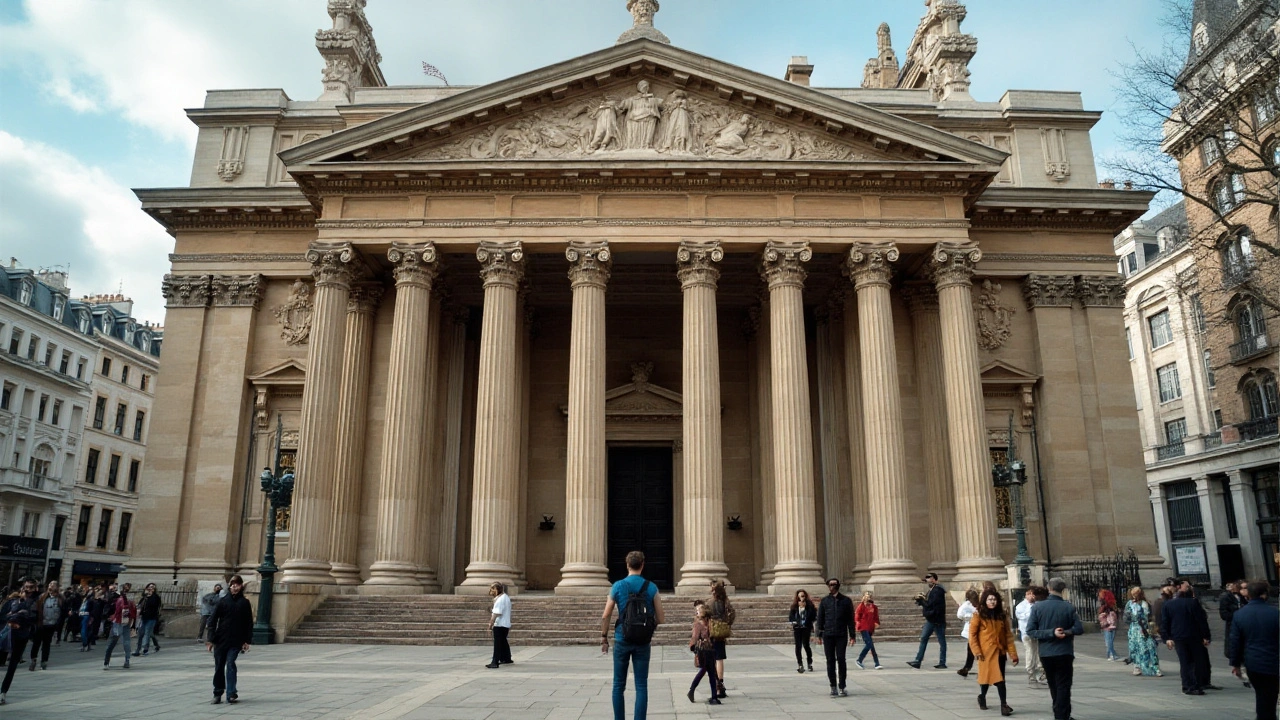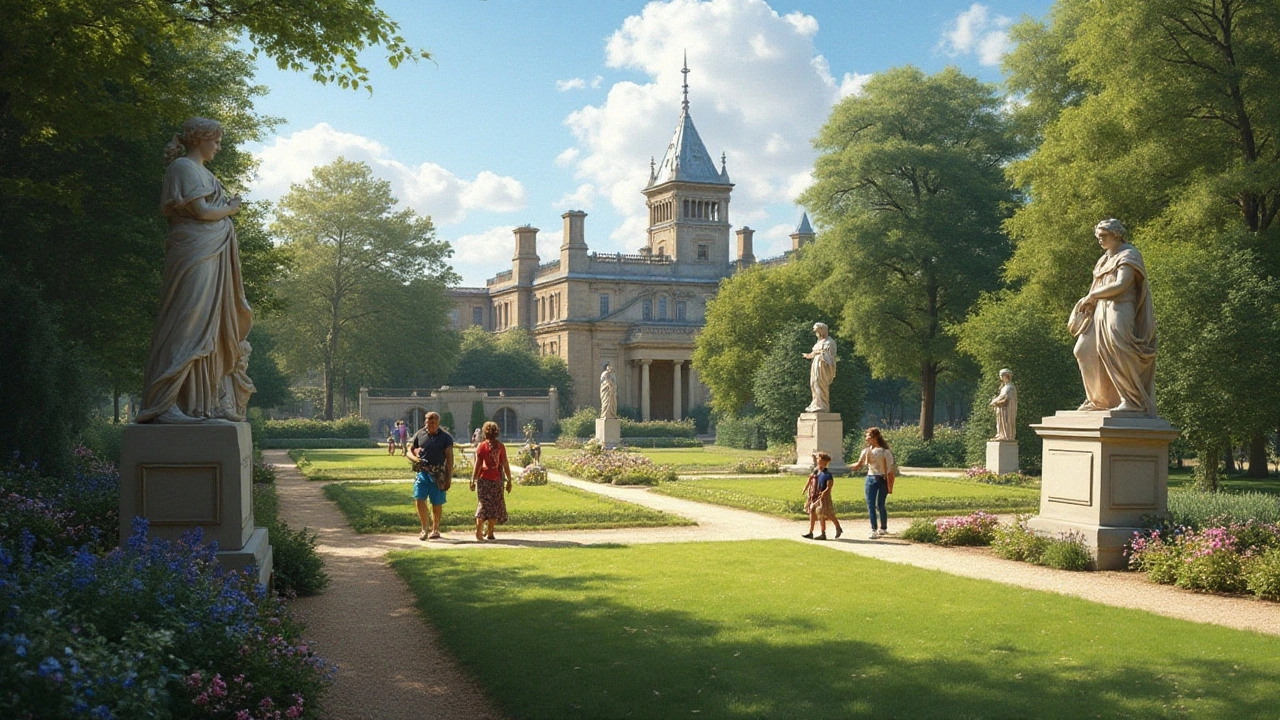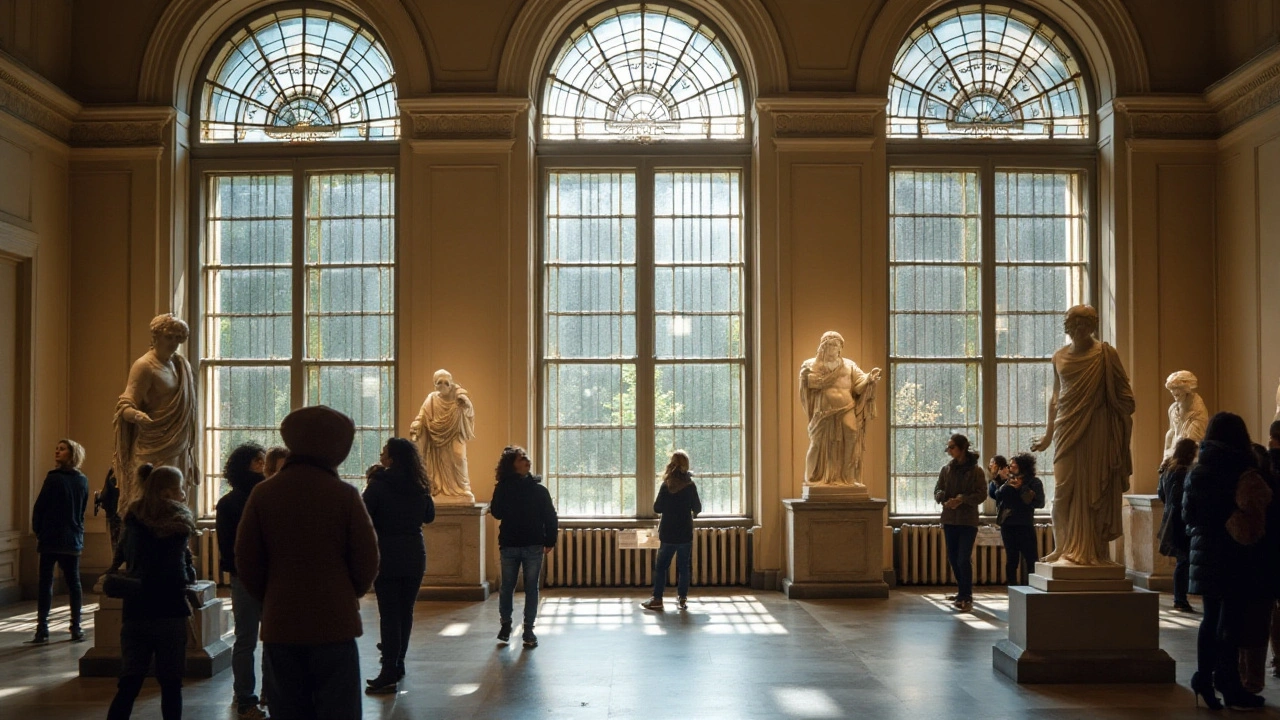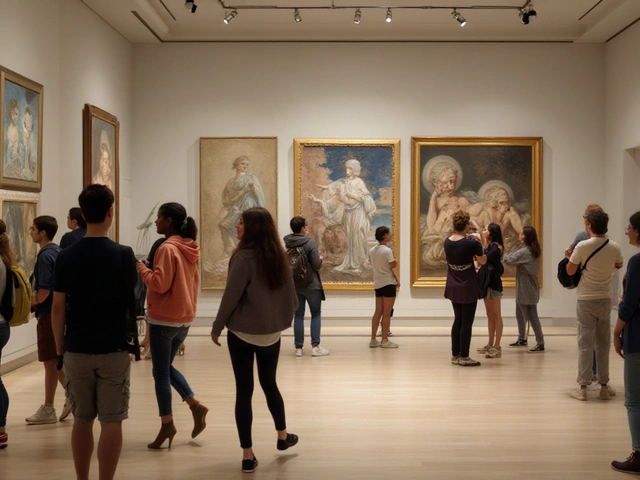The world of Classicism offers a rich tapestry of ideas deeply rooted in the philosophy of ancient civilizations, particularly the Greeks and Romans. This enduring style has left an indelible mark on art and architecture, guided by timeless principles of balance, proportion, and beauty. Far from being purely aesthetic, Classicism embodies a philosophy that seeks harmony between the human spirit and its surroundings. As we explore these philosophical foundations, we discover layers of meaning that have inspired creators through the ages.
Highlighting the Greeks' quest for ideal beauty and the Romans' pursuit of order, Classicism reflects a profound dialogue between form and function. These cultures laid the groundwork for artistic expression that continues to resonate today. Their ideas fostered an appreciation for symmetry and proportion, creating a legacy that still informs contemporary design and artistic endeavors. By understanding these early influences, we gain new appreciation for the elegance and enduring appeal of classical works.
- Origins of Classical Thought
- Philosophical Influences on Classical Art
- Architecture and Harmonious Design
- Enduring Legacy of Classical Ideals
Origins of Classical Thought
The roots of Classical philosophy extend deep into the fertile soil of ancient Greece, where intellectual ferment laid the foundational stones of Western thought. Around the 5th century BCE, thinkers like Socrates, Plato, and Aristotle emerged, shaping the bedrock of what would become known as Classicism. These luminaries debated ideas about truth, beauty, and the nature of existence itself, guiding the thoughtful integration of knowledge and art. In their dialogues, they deliberated the dynamic relationship between ideal forms and tangible reality, exploring how abstract concepts informed practical creation. This philosophical exploration was not merely academic; it was woven into the very fabric of societal thinking, influencing forms of governance, ethics, and artistic expression.
Greek philosophy prized harmony and balance, concepts central to the ethos of Classicism. Plato, for instance, proposed a world where ideal forms existed independently of their flawed earthly counterparts, suggesting that all beauty aspired to the perfection of these models. This notion found expression in the structured symmetry of Greek temples, where every column and cornice aimed to reflect an ideal divine order. Aristotle, on the other hand, emphasized the empirical analysis of nature, promoting observations that would enhance human understanding and improve life's quality. His emphasis on practical applications of theory helped bridge the gap between intellectual speculation and artistic creation, paving the way for a sophisticated approach to Art and Architecture.
The later adoption and adaptation of Greek ideas by the Romans further cemented their lasting influence. While the Romans were renowned for their engineering feats, they also admired Greek philosophical precepts, integrating these ideas into their societal framework without hesitation. Roman architecture often sought to manifest the philosophical pursuit of the 'good life,' reflecting stability, peace, and unity. As Cicero eloquently said, "If you have a garden and a library, you have everything you need." This emphasis on intellectual and aesthetic enrichment exemplifies how classical philosophy intertwined with daily existence, illustrating its practical, life-enhancing impact.
Historic artifacts and written treatises shed light on how these ancient cultures viewed their world and expressed themselves through art. Archeological evidence, like the ruins of the Parthenon or the carefully scribed dialogues of ancient philosophers, offers insight into the societal importance these thinkers placed on beauty and rationality. Their works suggest a deliberate, celebratory harmony with nature and intellect, reflected in the deliberate measurements and intricate designs that defined classical edifices. In today's analysis of Classical art and architecture, we continue to uncover layers of meaning, echoing the philosophical pursuits that motivated such awe-inspiring creations.

Philosophical Influences on Classical Art
The artistic achievements of the classical age were deeply informed by the philosophical musings of ancient thinkers. At the heart of Classical Art lies a pursuit of ideals articulated by philosophers such as Plato and Aristotle, whose teachings guided the creation of art that reaches for the sublime. Plato, with his Theory of Forms, inspired artists to seek beyond the physical world, capturing the essence of beauty and perfection in their works. By striving to imitate these ideal forms, artists were not merely copying nature but striving to reveal a deeper truth within it. This pursuit of ideal beauty became a cornerstone of classical expression from sculptures depicting the human figure in flawless harmony to the serene landscapes capturing life's essence.
Aristotle contributed in his own way by emphasizing the significance of balance and proportion, concepts that became central to classical aesthetics. For Aristotle, art was about achieving mimesis, an imitation that doesn't just replicate reality but elevates it, a reflection that resonates with the human experience in its most poignant form. The notion of art as a dialogue between truth and representation was revolutionary, infusing classical art with a depth that carried an ethical dimension. This encouraged an attention to detail and mathematical precision, visible in the works of the era which seekers of beauty continue to admire. Indeed, the appreciation of these pieces often centers on their ability to convey grace and balance, transcending mere appearance to touch on universal truths.
"The aim of art is to represent not the outward appearance of things, but their inward significance," remarked Aristotle, encapsulating the profound connection between art and philosophy.
But the influence of philosophy extended beyond individual works and into the broader aesthetic principles guiding classical art. The intellectual environment forged a new language for artists, encouraging a blending of technical precision with metaphysical inquiry. This blend is evident in the sculptures whose finely rendered forms possess a life-like quality, creating a sense of presence and emotion. It is also evident in architecture, where the principles of unity and symmetry are steeped in philosophical reflection, aiming not only to create visually striking structures but to resonate with the observer at a conceptual level. These principles grew into what we now know as Classicism, shaping the artistic dialogues that followed through history.
Moreover, philosophical influences allowed for a deep exploration of human emotion, a theme that permeated classical works across various media. The tragedy and comedy of human life, subjects which deeply preoccupied Greek dramas, found resonance in art through an emphasis on moral narratives and emotional depth. Painters and sculptors captured the full range of emotions, illustrating joy, sorrow, triumph, and despair with a realism that spoke to the viewer's own life experiences. The capacity of classical art to evoke empathy and reflection is part of what makes it so enduring, speaking across time to the core of the human condition.
Today, the impact of these ideas is seen in how we approach art not just from an aesthetic perspective but as a profound exploration of philosophy. Classicism invites us to consider the deeper implications of beauty and truth, achieving something more than a visual experience: it connects us to a lineage of thought that engages with our own understanding of reality. Whether in a celebrated painting, a revered sculpture, or a grand architectural design, one can trace the influence of ancient philosophy and remain inspired by its legacy.

Architecture and Harmonious Design
In the realm of classical architecture, harmony stands as a guiding principle, an ideal that architects throughout history have strived to embody in their work. This harmony is reflected not only in the balance between architectural elements but also in the integration with the surrounding environment. The ancient Greeks and Romans, with their profound understanding of geometry and space, laid the foundation for what we consider to be harmonious design. Their temples, amphitheaters, and civic structures were meticulously planned, embodying the belief that architecture should reflect the order and beauty of nature itself.
The Greeks, in particular, were masters of proportion, a concept that formed the core of their architectural endeavors. They believed that beauty arose from the precise mathematical relationships between different elements of a structure. This idea finds its most famous expression in the Parthenon, where the precise ratios create an optical harmony that is both subtle and profound. The interplay of light and shadow on its marble surfaces, the careful spacing of columns—these elements together create a sense of balance that is both visually stunning and intellectually satisfying.
In the writings of Vitruvius, the Roman architect and engineer, we find the earliest known treatise on architecture, "De Architectura." He outlined the three essential qualities every building should have: firmitas, utilitas, and venustas—strength, utility, and beauty.
"Architecture must be based on man's proportions," Vitruvius wrote, emphasizing the need for structures that connect on a human scale.This human-centric perspective on architecture has guided countless architects since then, influencing the grand designs of Renaissance cathedrals and the neoclassical government buildings that line major cities around the world.
It is interesting to note how these classical ideals have persisted through time, adapting to new contexts yet retaining their core values. In recent times, the Bauhaus movement of the 20th century, for instance, reinvented the classical approach by focusing on the unification of form and function while still adhering to the traditional notions of symmetry and proportion. The enduring appeal of classical architecture lies in its ability to merge aesthetic beauty with practical functionality, a balance that speaks to our innate desire for order in chaos. Across varying cultures and epochs, this quest for architectural harmony continues to inspire and inform architectural practice, proving the timeless relevance of classical tenets in our ever-evolving world.
Today, as we stand at the intersection of tradition and innovation, architects continue to draw inspiration from these foundational ideas, ensuring that the legacy of classical architecture is not simply preserved but also dynamically revitalized. The ongoing dialogue between the past and the present enriches our built environment, creating spaces that are not only functional but also resonate with historical depth and meaning. This marriage of the old with the new, the resonances of antiquity with contemporary aesthetics, highlights the unique ability of classical architecture to transcend time, evoking a sense of continuity and connection across generations.

Enduring Legacy of Classical Ideals
The legacy of Classical ideals is a testament to the influential power of ancient philosophies and their ability to traverse time and cultural boundaries. The timeless appeal of Classical philosophy lies in its profound articulation of universal truths and beauty, drawing on principles of balance, harmony, and proportion. The ancients believed that beauty was not just skin-deep but was a profound expression of order. This idea has been woven into the very fabric of art and architecture throughout subsequent eras, from the Renaissance's rekindling of classical antiquity to neo-classical movements in modern times. The aesthetic ideals forged in the marble and stone of antiquity continue to interpret ideas into visual form, inspiring an enduring quest for beauty and clarity. This has been evident in structures like the columns of the Parthenon and the symmetry of Leonardo da Vinci's art, which illustrate these enduring principles. These examples show how ancient architects and artists have left their footprints on modern-day aesthetics.
One cannot overlook how the political and philosophical environments of ancient Greece and Rome instilled these ideals with an intrinsic sense of civic pride and cultural identity. These societies placed considerable emphasis on public spaces that embodied their ideals of civic virtue and the good life, influencing public architecture worldwide. This principle is still mirrored in today's public buildings, such as courthouses and museums, which often feature columns and porticoes reminiscent of Greek temples. These elements reflect a deeper connection to these classical roots, showing how they continue to shape our built environment. Notably, classicism's influence extends far beyond aesthetics and into philosophical thinking; these societies valued reason, debate, and the pursuit of knowledge, which manifest in today's educational systems and academic structures.
"The Greeks had the first great miracle of human freedom," remarked historian Will Durant in his works, capturing the revolutionary impact their ideas have continued to have on modern thought.
The journey from antiquity to modern times shows us how Classicism provided a stable bedrock upon which new ideas and interpretations have been built, always referencing back to seek approval from its revered forms. Architects of the Enlightenment period looked back to these classical principles to express new ideas of civil equilibrium, while early American architecture adopted colonial Georgian styles as symbols of new nationalism. This can be seen in iconic landmarks across America's landscape, such as Thomas Jefferson's Monticello, which drew richly from Palladian principles guided by classical antiquity. In contemporary culture, this legacy persists in not only what we build but also in the philosophical approach to art and design processes—seeking universality amidst individuality.
As modern society continues to evolve, the enduring legacy of classical ideals serves as both a reminder and a guide, helping generations to find inspiration and direction. These ideas act as a reference point, ensuring that innovation does not lose sight of fundamental aesthetics and moral values. The classical principles inform not just design choices but also broader cultural values as they reiterate the importance of community, shared ideals, and public responsibility. Through this enduring legacy, we trace a thread back to a time when the seeds of humanism and democracy were first sown, providing us with the tools to cultivate flourishing societies that are both good to live in and aesthetically pleasing. Consequently, by appreciating these Classical ideals, we gain a deeper understanding of our historical and cultural landscapes, ultimately bringing clarity to the paths that lie ahead in cultural aesthetics and collective societies.




